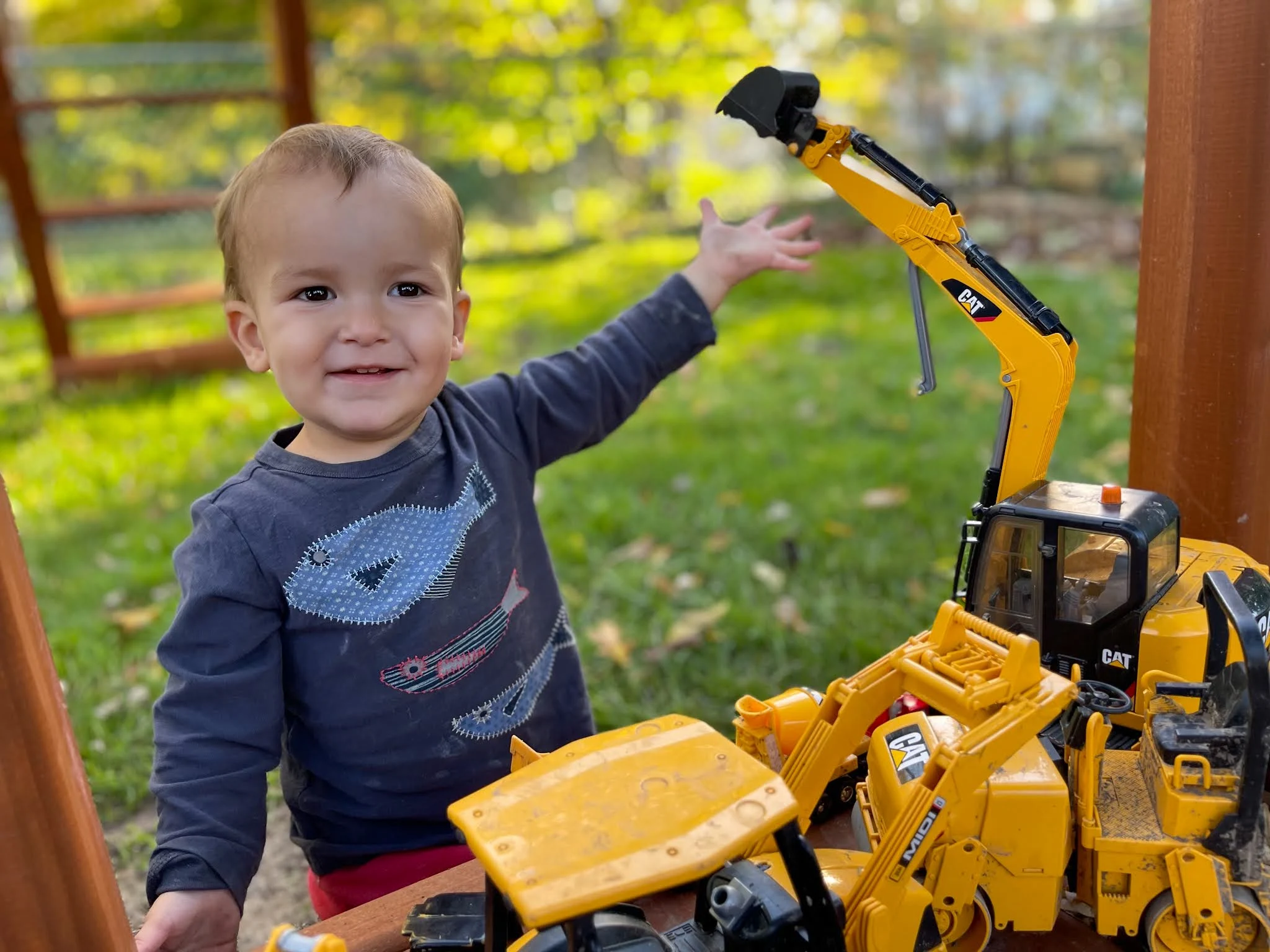Let's just say that Teddy is a particular human. As far as flexible people go, he isn't on the list. Teddy likes his routine, his materials, his clothes...just so. And, honestly, that's not that unique for toddlers in general. Toddlers especially around age 2 are deep into the sensitive period for order. As Maria Montessori reminds us, "a child of this age notices a lack of order in the least details which escape the notice of adults and even older children" (Secret of Childhood.) This means that changes in things like the clothes they are wearing, the activities they are doing, the decor, or in the materials on the shelf are noticed. And sometimes those changes can be really upsetting.
One change that has been really hard for Teddy this Autumn has been the change from his summer clothes to his fall and winter wardrobe. He didn't want new long sleeved shirts or pants. He wanted his same tank tops and shorts from the summer time. That wouldn't be a huge problem if we lived somewhere warm, but we live in Minnesota where we get all the weather - from very hot in the summer to dangerously cold in the winter. Teddy will have to adapt his wardrobe.
So, I wanted to share some tips that have made it easier for us to respectfully transition to new clothing with the change of seasons:
- Purchase with Interests/Sensory Needs in Mind: When making decisions about what to get for the next season, think about the things your child enjoys. Just like we think about these things when it comes to the materials on their shelves, think about it for clothes. A truck shirt for Teddy is much more enthusiastically welcomed than one with trees, for example. Same with sensory feels, try to avoid things that might irritate or bother your child. Instead focus on textures that you've sensed they are drawn to enjoying.
- Pick One Change at A Time: Don't go in with the expectation that you can change out all the clothes immediately. We went slowly, changing just shirts and then adding pants. We respected those times where he still wanted to use the summer shirts and encouraged pairing them with pants. It's been a process, not an overnight change that we just expect him to deal with.
- Start Early, Don't Set a Timeline: Don't wait until the last minute to make the change to avoid the hard feelings. We started early so that we could take advantage of slightly warmer temperatures and nothing was urgent. We could move at his pace. And, it really was and is a work in progress. For some kids, it may not be a big deal. For others, it might take awhile. We can move through the process without expectations.
- Make it Playful: Find ways to make these changes playful. Touch the clothing to different parts of your body and theirs. Wrap a baby doll in the clothing. Build blocks on top of it. Drive cars over it. Whatever fits the interests of your unique child. Try not to make it this stressful thing that you only use or talk about when getting dressed.
- Take Advantage of Natural Consequences: Sometimes instead of forcing it, it's best to just let them figure it out on their own. Bring along mittens, hats, coats or warmer clothes. When they are cold, they will appreciate the choice to put something else on. Sometimes they just have to feel the reason why we are changing clothes and creating a new routine before being open to the change.
Not every child will have a hard time transitioning between clothes each season. But, those that are particularly sensitive to these changes, following their path will be helpful in moving through the change. Remember their brains are really sensitive to order and change and what seems to us as a small change, might not be small to them!
Did your toddler have a hard time changing their wardrobe?
Did your toddler have a hard time changing their wardrobe?



